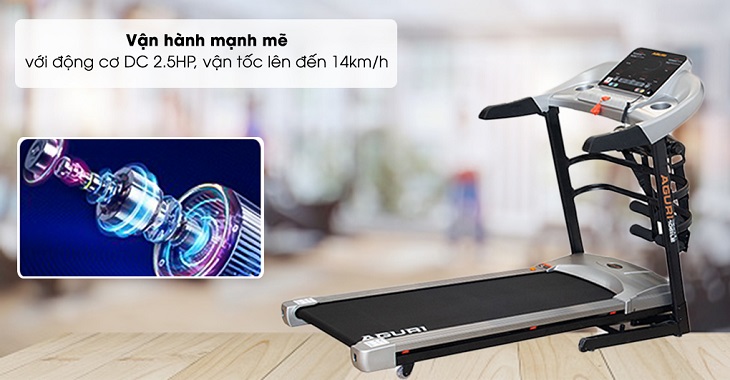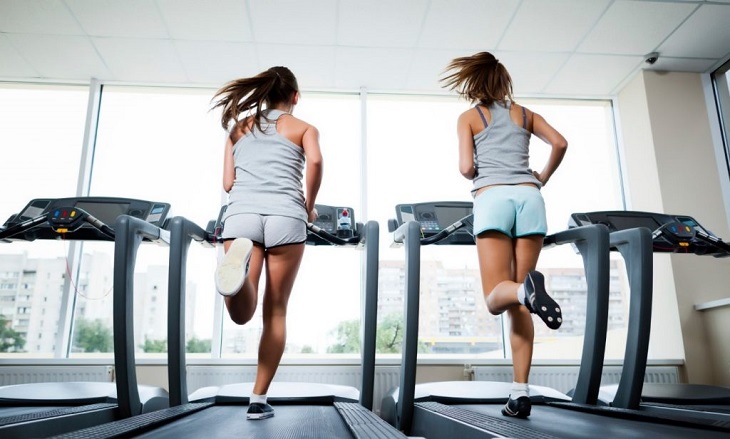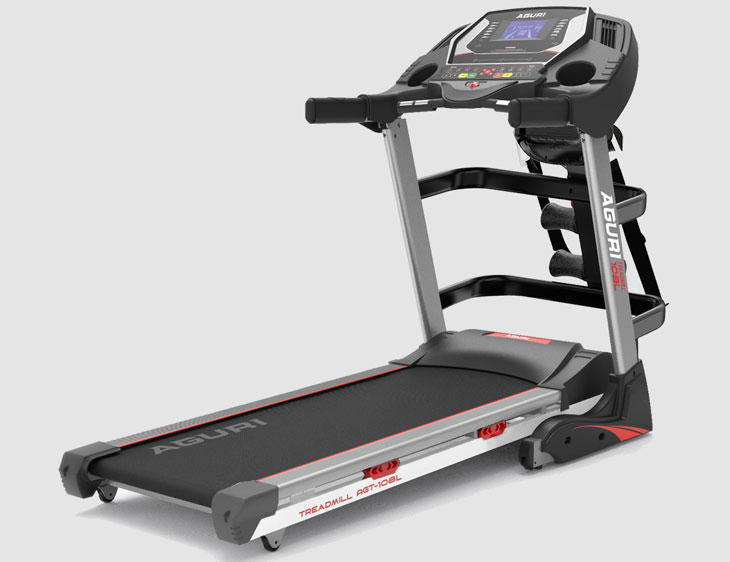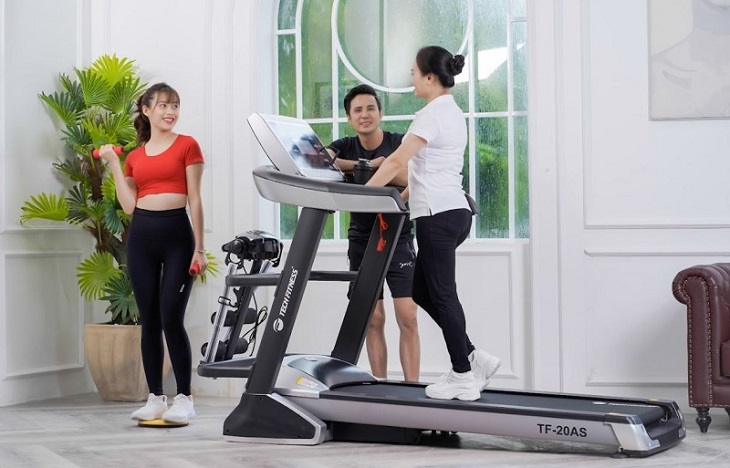1 Do Treadmills Use a Lot of Electricity?
During operation, treadmills require an electric motor to adjust the machine’s speed and power. Therefore, some energy consumption is necessary for its function.
However, the amount of electricity consumed depends on several factors, such as the type of motor and the intensity of your workout.

Electricity consumption depends on various factors.
According to manufacturers’ tests, if a treadmill uses a 2 HP DC motor and runs at a maximum speed of 12 km/h, it will consume approximately 1500 W of electricity.
However, if you operate the same 2 HP treadmill at a moderate speed of 6-8 km/h (using only 2/3 of its power), the electricity consumption drops to around 1000 W.
As you can see, using the treadmill for 20-30 minutes per day will not result in excessive electricity consumption.

Maintain a healthy exercise routine of 20-30 minutes per day without excessive electricity consumption.
2 Factors Affecting Electricity Consumption in Treadmills
Motor Power
The power of the treadmill’s motor significantly influences its electricity consumption. A higher power rating means the motor can withstand greater force, achieve higher maximum speeds, and, consequently, consume more electricity.
Specifically, treadmills with a 1 HP motor consume approximately 750 W of power and are only suitable for individuals weighing under 50 kg. As a result, these machines are not very popular among consumers.

The Aguri AGT-106LE Treadmill features a 2.5 HP DC motor for enhanced performance and a more effective workout experience.
For treadmills equipped with a 2-2.5 HP DC motor, operating at maximum running speed will consume around 1500-2000 W of electricity. Machines with more powerful motors, such as those rated at 4-5 HP or higher, will demand even higher electricity consumption.
Weight
Exceeding the maximum weight capacity of the treadmill can also increase electricity consumption. As the user’s weight increases, the motor must work harder, resulting in higher power output and, consequently, higher electricity consumption.

The Airbike Sports T80 Treadmill has a maximum weight capacity of 100 kg.
Exercise Duration
To improve your physical health effectively, it is essential to choose a workout intensity suitable for your fitness level. According to experts, just 20-30 minutes of daily exercise on a treadmill can help you stay fit and energetic.

Exercising for extended periods can lead to excessive electricity consumption and potential health risks.
Working out for extended periods, several hours at a time, not only increases electricity consumption but can also be detrimental to your health, impacting your cardiovascular system, muscles, joints, and more.
Running Mode
The running mode of the treadmill also affects electricity consumption. Treadmill manufacturers typically offer various running modes, including walking, jogging, normal running, and high-intensity running.
The speed of these modes usually ranges from 0.4-14 km/h. As the treadmill’s speed increases, so does its electricity consumption compared to the initial speed.

The Aguri AGT-115L Treadmill offers a variety of training modes to suit different fitness needs.
Belt Tension
The treadmill’s drive belt plays a crucial role in its operation, as it transmits energy to ensure smooth performance. If the belt is too tight, it increases friction between the motor and the belt, leading to faster wear and tear, reduced belt elasticity, and increased load on the motor, resulting in higher electricity consumption.

The Aguri AGT-108L Treadmill features high-strength parts, ensuring efficient performance and energy savings.
During installation, it is essential to check the tightness of the treadmill’s drive belt carefully. This not only helps reduce electricity consumption but also enhances the user’s workout experience and effectiveness when using the treadmill.
Large Display and Additional Electrical Devices
The treadmill’s display screen shows various workout parameters, such as incline, time, and speed. Some models feature LED touchscreens, which consume slightly more electricity than standard screens.

The Aguri AGT-117L Treadmill is equipped with a 5-inch LCD screen for easy monitoring of workout data.
While the treadmill’s display does not consume a significant amount of electricity, using additional features simultaneously, such as massage functions, music playback, or video viewing, will increase overall electricity consumption.
3 Tips for Energy-Efficient Treadmill Usage
Use a 220V Power Source
For treadmills, it is recommended to use a 220V power source to ensure stable motor operation. Using a power source with a significantly higher or lower voltage can affect the machine’s performance.

Using a 220V power source helps maintain stable motor operation in treadmills.
Unplug When Not in Use
Even when not in use, treadmills consume a small amount of electricity to maintain the motor. Therefore, it is advisable to unplug the machine and disconnect the power source completely when not in use to minimize electricity consumption.

Unplug the treadmill when it is not in use to reduce electricity consumption.
Choose the Right Exercise Time for Each Family Member
Selecting the appropriate exercise time is crucial for effective treadmill usage. Whether you choose to work out in the morning, noon, or evening, a consistent routine will help you reduce fat and maintain a healthy weight.

Choosing the right exercise time for each family member is essential for effective treadmill usage.
Regular Cleaning and Maintenance
Regular cleaning and maintenance of your treadmill are essential to prevent dust and dirt buildup, especially around the moving parts. Over time, this can reduce friction, affecting the treadmill’s speed and potentially causing damage.
After each use, clean the treadmill with a soft cloth and use a brush to sweep the running belt. Additionally, regular lubrication according to the manufacturer’s recommendations will improve performance, extend the machine’s lifespan, and contribute to energy savings.
– Type of treadmill: There are two main types of treadmills: manual and motorized. Motorized treadmills tend to consume more power due to their electric motors.
– Motor power: The higher the motor power, the more electricity the treadmill will consume. Treadmills with stronger motors can handle higher speeds and inclines, but they also require more energy.
– Speed and incline settings: Higher speeds and steeper inclines require more power to operate, as the motor has to work harder to maintain these settings.
– User’s weight: Heavier users will require the motor to work harder, thereby increasing power consumption.
– Choose a manual treadmill: Manual treadmills do not have electric motors and therefore consume significantly less power. They are powered by the user’s movement, making them a more energy-efficient option.
– Opt for a lower-powered motor: If you’re using a motorized treadmill, consider choosing a model with a lower-powered motor. These treadmills are designed for lighter use and will consume less electricity.
– Adjust your speed and incline: Running at lower speeds and using minimal incline can help reduce power consumption. Higher speeds and steeper inclines require more energy to maintain.
– Maintain your treadmill: Regular maintenance, such as keeping the belt lubricated and the machine clean, can help ensure your treadmill runs efficiently and consumes less power.































